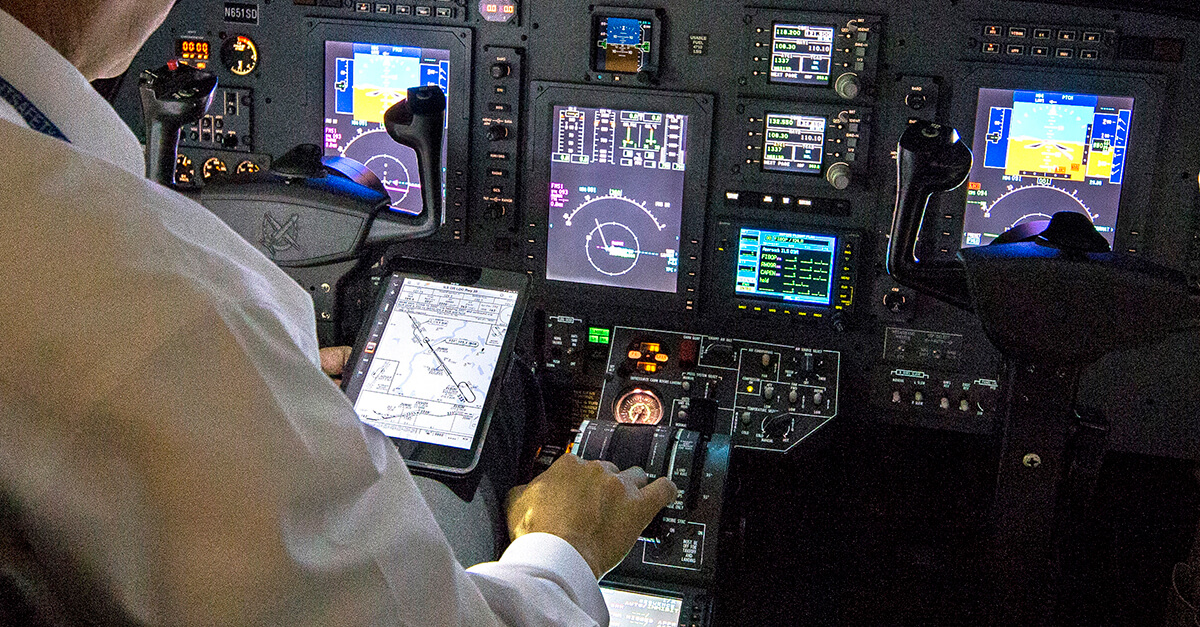
Aug. 19, 2013
Though the tablet revolution has opened up a plethora of opportunities for business aviation – with new uses still being discovered – flightcrews and owner-flyers still face questions and the potential for problems.
Robert Creek was one of the first half-dozen business pilots approved to use Apple’s iPad in the cockpit, and he was so convinced of the benefits that technology presents that he became an aviation app developer himself. His company, CockpitApps.com, is now marketing two pilot apps for Apple iOS devices.
“Look at it like a library,” said Creek, who is based in Chicago. “You can take a world worth of charts – which would weigh about 200 pounds if you tried to pack them into your flight case – and put them in your iPad, which is the size of a magazine. You can sync your charts in minutes, whereas it would normally take you an hour or more to do that with paper charts. And if you do it by hand, you’re likely to make a mistake. There’s nothing more frustrating than looking for a chart and not finding it.”
Tablet devices approved for cockpit use are also capable of helping you calculate weight and balance, catch up on valuable operational data and check the weather in real time from hundreds of miles away, Creek said.
But devices like iPads also carry the potential for dangerous distraction, he cautioned.
“If you’re stuck paying attention to the iPad, there’s the chance you might become distracted,” Creek said. ”There’s so much information on those devices. Pilots sometimes get caught up in checking their email or text messaging. We need to address that.”
Creek, who will present a seminar titled “A Pilot’s Guide to Using iPads in the Cockpit” at NBAA’s Business Aviation Regional Forum at Illinois’s Chicago/Waukegan Airport on Sept. 12, advocates the notion of a “sterile iPad” in the same sense that safety experts promote a “sterile cockpit,” where there is nothing to distract the flightcrew from the tasks at hand.
At the same time, Creek said, there is a learning curve to iPads comparable to other cockpit tools. Using an unfamiliar app in flight could increase your task saturation, he warned. Task saturation and technological advances are both listed on the NBAA Safety Committee’s Top 10 list of concerns.
With more operators formalizing safety procedures for iPads, Creek is bullish on the future of tablet devices in the cockpit. His own apps, iLog and iFuel, are aimed at shaving time from a pilot’s busy schedule.
“There’s so much out there. We’ve hit merely the tip of the iceberg. These apps will continue to evolve and new apps will be developed because they’re easy and reliable,” he said.
Creek’s session at the Chicago Regional Forum will cover FAA approval processes, available aviation apps and the development of company procedures for the use of tablet devices on the flight deck.


 International Business Aviation Council Ltd.
International Business Aviation Council Ltd.